DRAWING TOGETHER
SEPTEMBER 2020
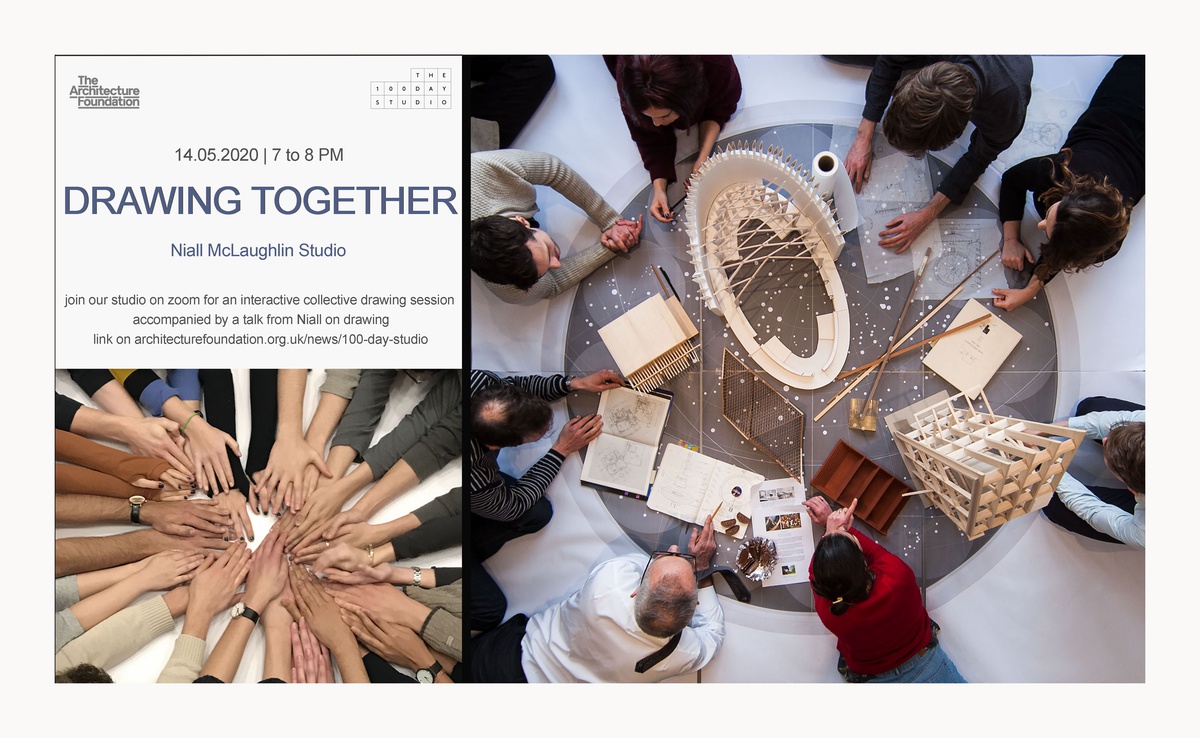
“Boccaccio’s fourteenth century classic the Decameron takes the form of 100 tales told by a group of young people who have retreated to a villa while waiting for their native Florence to escape the grip of the Black Death”.
The 100 Day Studio is an initiative started by The Architecture Foundation that adapts Boccaccio’s 14th century classic the Decameron into a series of Zoom lectures. Our studio was invited to host a lecture on Day 26.
Our office has a long-standing tradition of drawing together. From the plaster floor drawing we made of the Bishop Edward King Chapel, to the collective drawings for the “Losing Myself” installation at the Venice Biennale, the studio’s practice of collaborative draughtsmanship has always been a sociable activity, materialising our thoughts in a way that would not be possible individually. Starting from a roll of tracing paper, drawing together becomes the medium through which we relate and converse. During a recent online studio discussion on the relationship between memory and space, we started sketching our office as we remembered it. We drew it together with Niall using the Zoom Whiteboard whilst recounting memories of the space we once shared. The drawing started to become collaborative, as each colour represented a different person’s drawing. We realised that through using this technology, there was the opportunity to share our collective drawing tradition with a wider audience. We decided to host an interactive drawing session for our 100 Day Studio lecture, hoping to illustrate the sense of community through audience participation during this period of isolation.
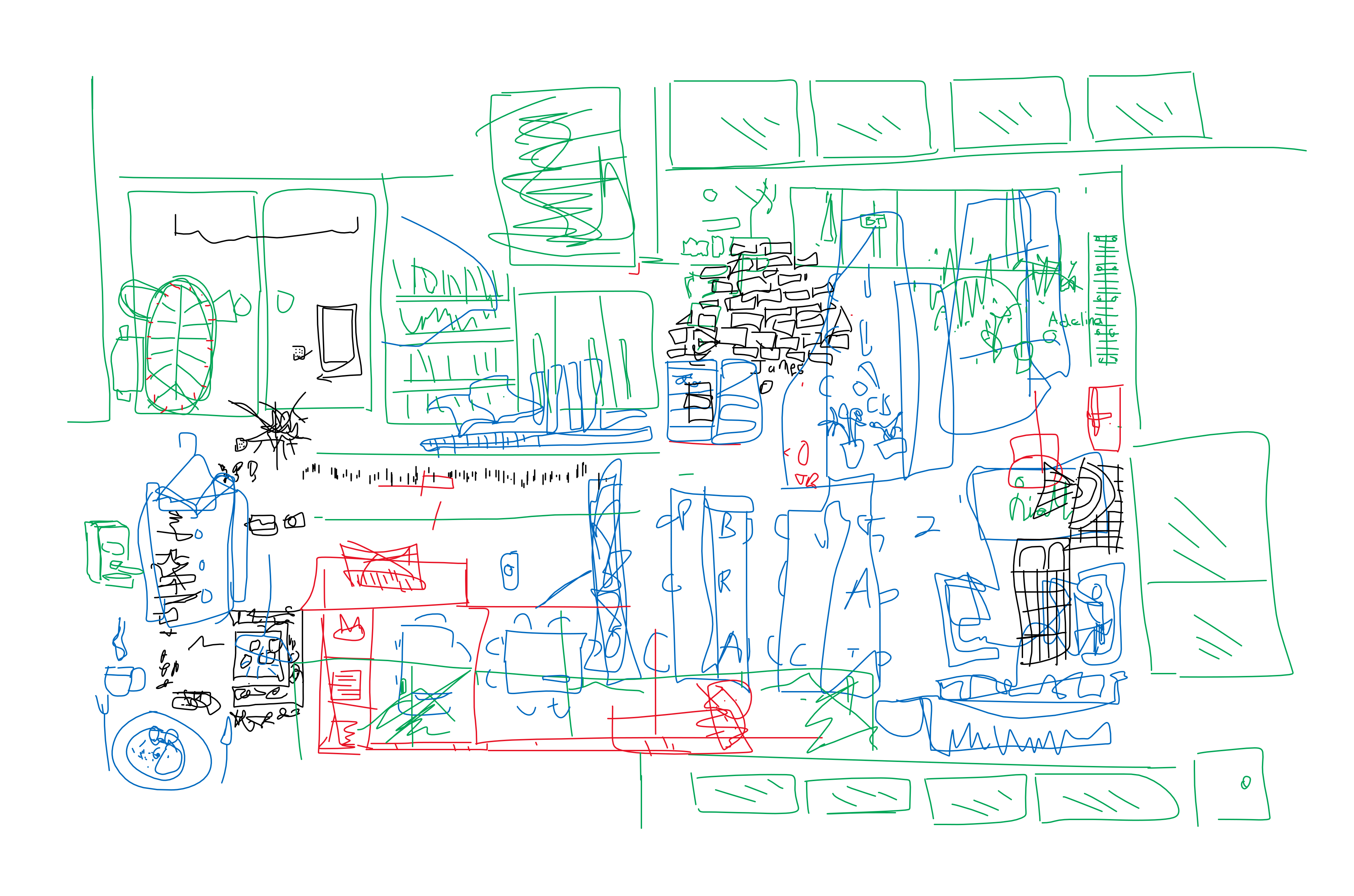
The move to working through remote digital media has been an experiment for us on its own: how could we choreograph this drawing exercise with hundreds of participants communicating with each other in real time? After hosting a few digital drawing sessions in our studio, the importance of designing a framework that would produce a cohesive collective drawing while still allowing for individual creative expression became apparent. Since the lecture would be taking place on a Thursday and finishing in time for the weekly 8pm Clap for Carers event in the UK, our narrative recognised our shared lockdown experience and appreciation for our health workers.
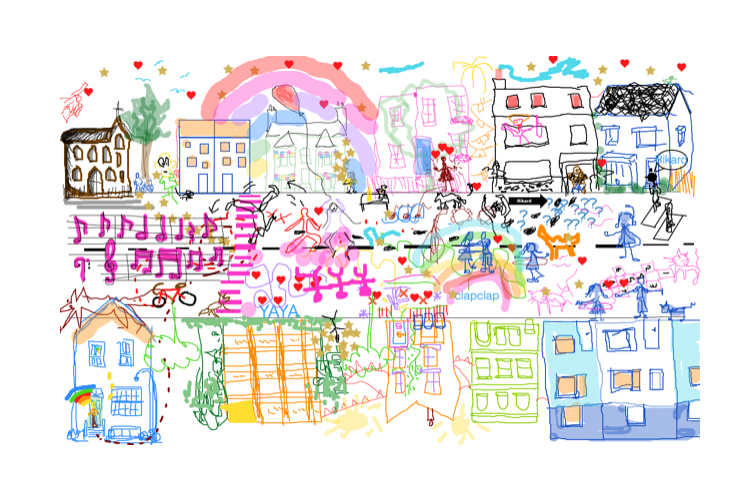
There were around 300 people taking part in the collective drawing session, which was co-hosted by everyone from our studio. The participants were asked to draw their own house with themselves at a window. Then, they were asked to imagine putting on their shoes, go outside, and join one another in front of the house to clap for NHS and carers. They were invited to draw themselves hosting a street party in their neighbourhood when the lockdown is over. Very quickly, we saw each one of the whiteboards being filled with trees, flowers, picnic blankets and delicious pastries. The hosts then invited the audience to take a virtual walk down the street and design a public space together. It could be anything from a communal garden to a public swimming pool; from allotments to an athletics track; from a market to a pub, etc. It was great to talk about the variety of activities people looked forward to doing again.
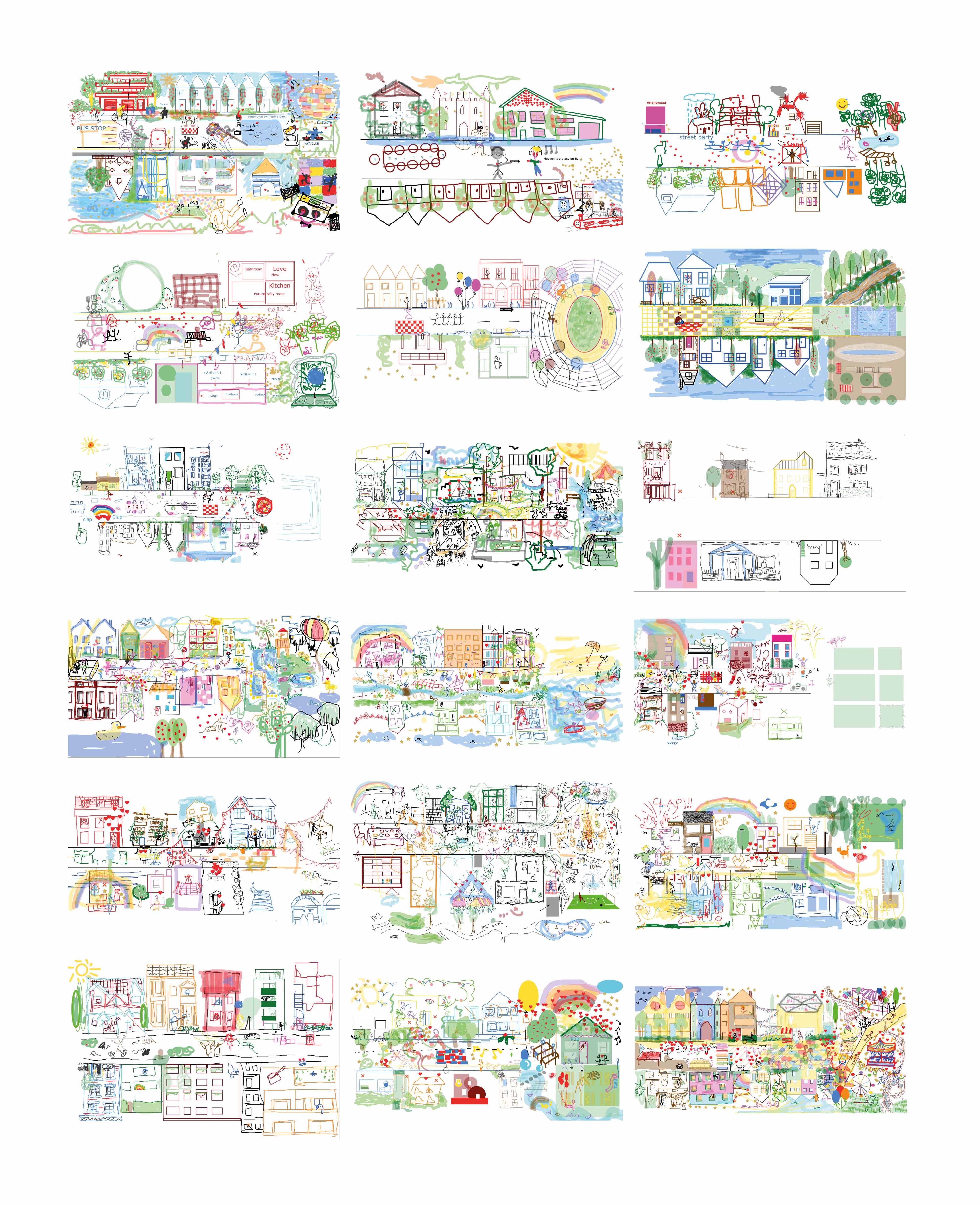
It was a one hour event. The collective drawing took 25 minutes in 20 breakout whiteboard rooms. The final composition was assembled from 20 fragments in 25 minutes while Niall gave a talk. It was completed just in time for the weekly 8pm Clap for Carers event in the UK. The collective drawing was revealed alongside a soundtrack by the composer Kevin Polland, mixing our own clapping with live sounds coming in from the street. We recognise this particular beautiful assembly of sketches is just one of many possible outcomes, reflecting the unpredictability produced by the structure of this exercise. This drawing is not a finished artefact, but rather a never-ending work-in-progress. We look forward to weaving the next tapestry!
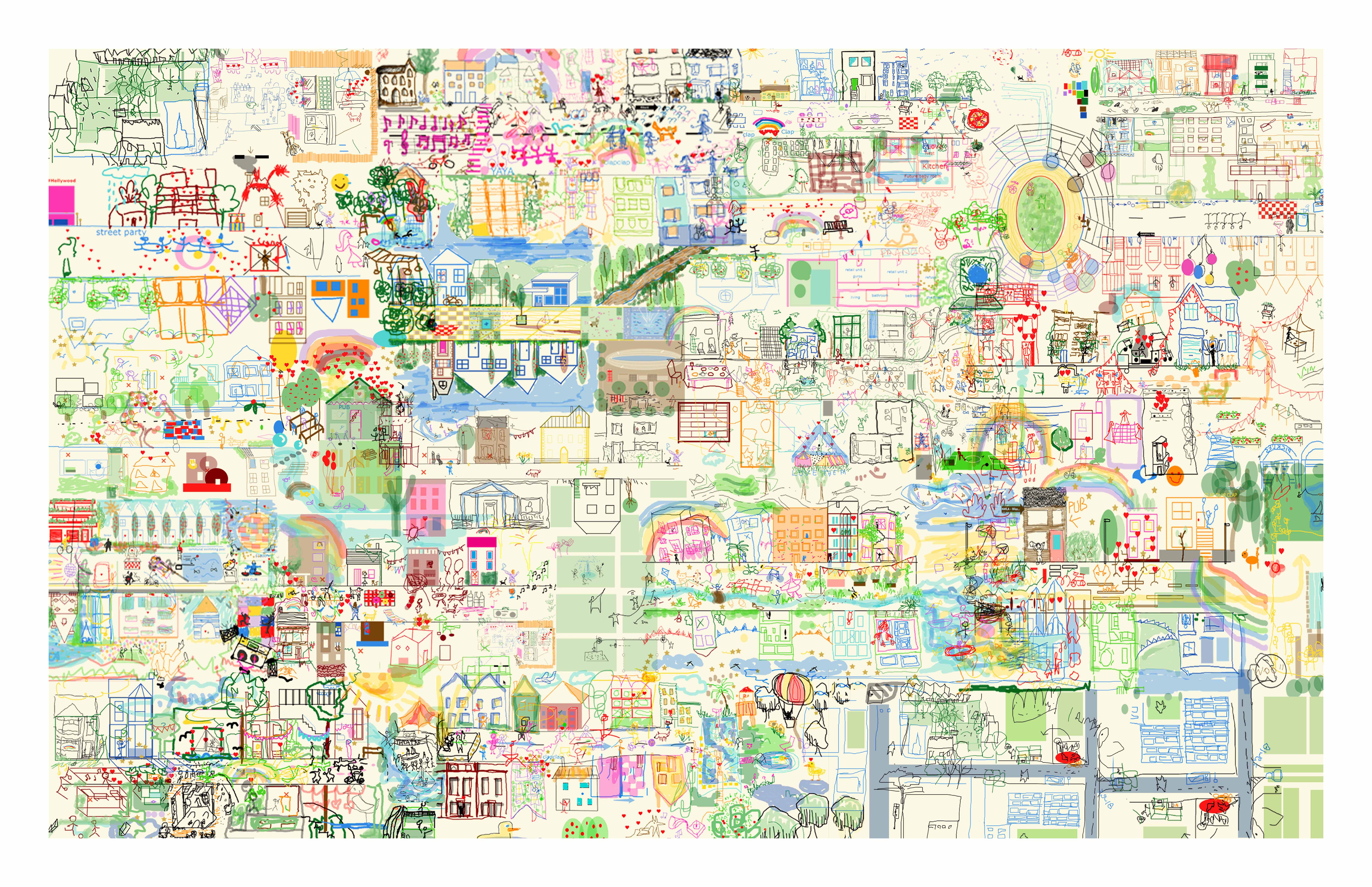
CYCLING TO SITE
JUNE 2020
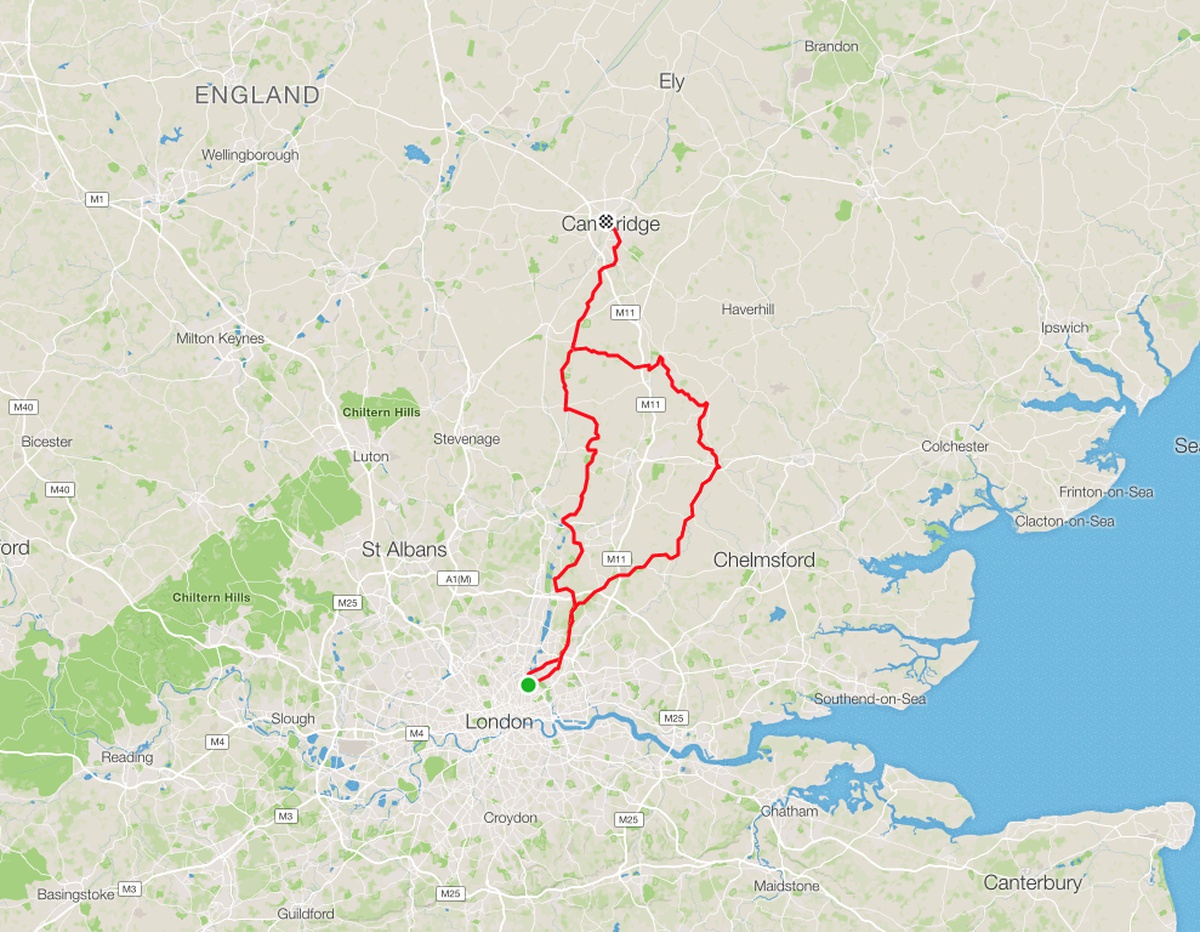
The Coronavirus pandemic has forced us all to adjust our lives and working practices in unexpected ways. Some, perhaps many, of these adjustments are positive, opportunities to see the world in a different way. At the moment, I am working on a small stone building for the choir at Trinity Hall in Cambridge. The site closed for several weeks immediately after the lockdown was imposed, and then reopened in early May. With a small, finely-detailed building like this, remote site inspections would be all but impossible, so I needed to start making site visits again. Pre-pandemic, I was a frequent traveller on the 0742 King’s Cross to Cambridge – but government advice and office policy were clear in saying that public transport should be avoided if at all possible. I don’t drive, and I enjoy long-distance cycling, so decided to cycle to my fortnightly inspections – a 135 mile round trip from my house in Hackney.
A bright sunrise and it’s warm already. Leaving home before six, I cross the Lea Valley and go out through Walthamstow, with swifts screaming above me and not much else for company. Epping Forest is almost deserted, and loud with birdsong. Two mountain bikers cheerily request a tow as I overtake them. Around Harlow, the rush hour is unexpectedly early and vicious, so I am happy to emerge into the quiet lanes and villages of Hertfordshire. On the chalk hills around Much Hadham, where Henry Moore had his studio, I watch a red kite gliding over a field, sunlit against the clear blue sky. After a long, gradual downhill, I cross the flat fen-edges with a tailwind helping me towards Cambridge. Coming into the city, my own route-planning mistake sends me alongside the railway and through the cluttered backstreets of Addenbrooke’s Hospital, rather than along the river through Grantchester Meadows as I had intended. Down the Hills Road and into central Cambridge. Tourists and students are notable by their absence, and the city seems full of builders, including a neat socially-distanced row of men in hi-vis having their tea break on the low wall outside King’s College Chapel.
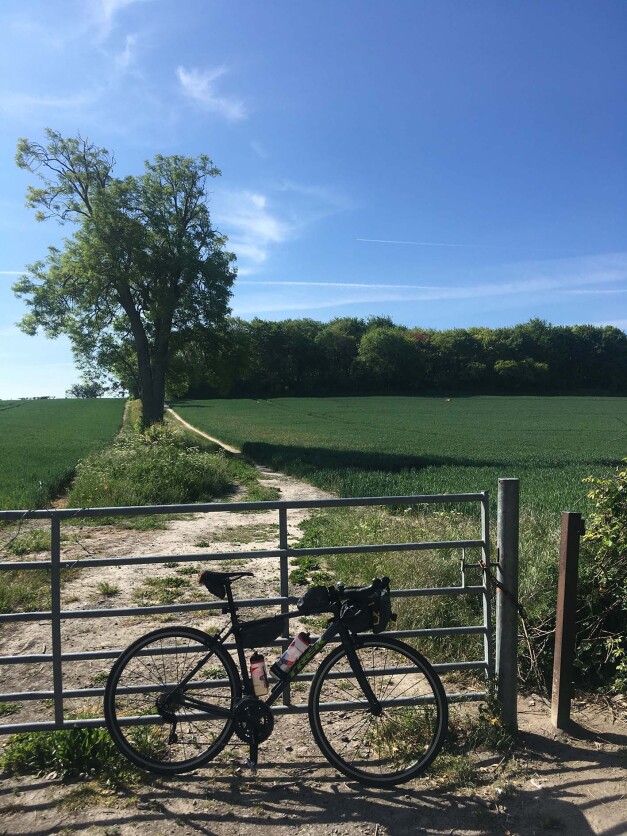
Gateway near Great Shelford, Cambridgeshire
When I arrive on site, to my relief, nobody bats an eyelid about the architect turning up in Lycra (or at least they are polite enough not to mention it!). I get changed and negotiate a slight delay in my temperature being taken as a COVID precaution, concerned I might be sent straight back again because I am hot from cycling. It’s exciting to see the building progressing again after a long period of inactivity. The masons are as exacting as ever, apologising for their own snags before I spot them, and grumbling about the occasional inaccuracies of the sawing work done at the quarry. It’s fantastic to see the strong sunlight and shadows on the stone surfaces, with arrises and joints we spent so long agonising over in the office as drawings now holding their own as part of the emerging building. I stand on the roof to have an enthusiastic conversation with the window installer about rubber membranes, and then go into the office to talk through some drawings with the site manager, both of us realising it is a challenging task if we are two metres apart with the drawing in the middle.

– The building in progress: Granite plinth and first course of limestone, with the lantern framework above.
– Granite plinth and Portland Stone
– Portland Stone details – Jordans Basebed and Grove Whitbed
– Internal reveals and makeshift masons’ workbench
The inspection and discussions finished, I am wished a safe journey back with a wry smile. I sit on The Backs and eat a large packed lunch, then set off back the way I had come. Near Royston, I turn off and pick up another way home, into Essex and through Saffron Walden. At Debden, I find the village hall tap and wonder if I might drink it dry. Riding along in the evening sun, the long day catches up with me and I stop for a nap at the edge of a dry, cracked field of wheat. Carrying on into a steady headwind, Thaxted looks beautiful, with its windmill, buttressed church tower and medieval timber-framed houses. Approaching London, the roads are familiar from the rides that have kept me sane during lockdown, and I roll back through Epping Forest just as the sun is sinking over the horizon. The Lea Bridge Road is a bit of a shock to the system after so many miles of quiet sunlit lanes, so I spin along quickly and arrive home for a cold beer and some supper, ready for a ‘normal’ day working from home tomorrow.
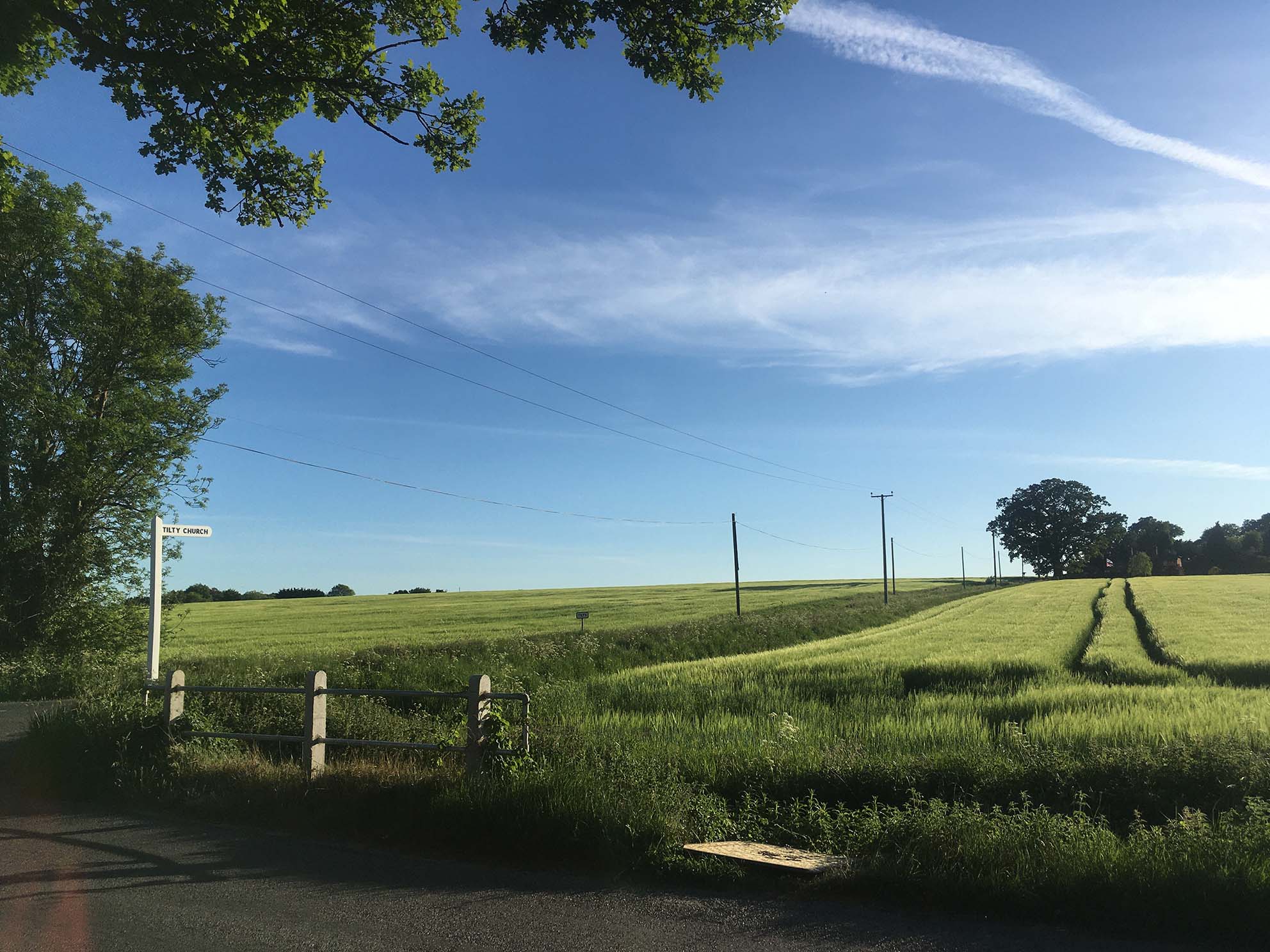
Fields near Tilty, Essex








